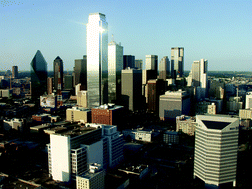Spatial analysis and land use regression of VOCs and NO2 in Dallas, Texas during two seasons†
Abstract
Passive air sampling for nitrogen dioxide (NO2) and select volatile organic compounds (VOCs) was conducted at 24 fire stations and a compliance monitoring site in Dallas, Texas, USA during summer 2006 and winter 2008. This ambient air monitoring network was established to assess intra-urban gradients of air pollutants to evaluate the impact of traffic and urban emissions on air quality. Ambient air monitoring and GIS data from spatially representative fire station sites were collected to assess spatial variability. Pairwise comparisons were conducted on the ambient data from the selected sites based on city section. These weeklong samples yielded NO2 and


 Please wait while we load your content...
Please wait while we load your content...